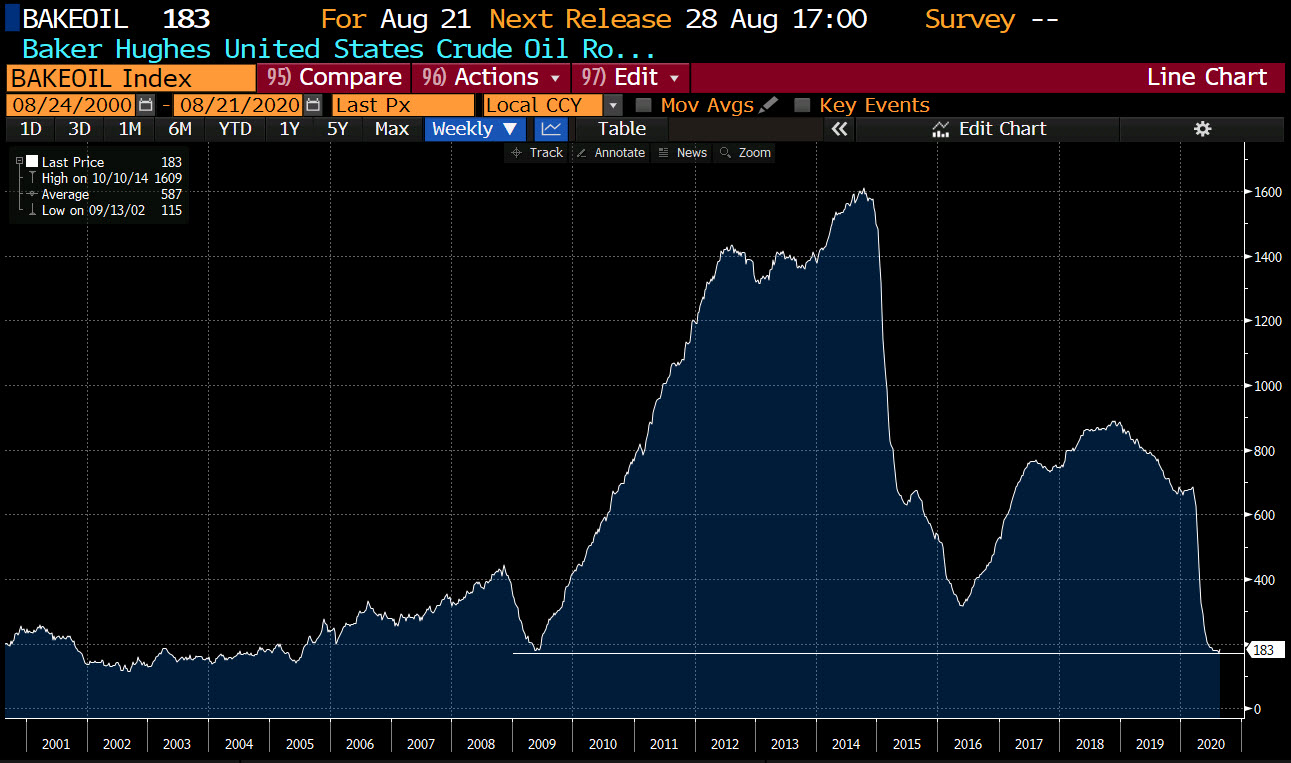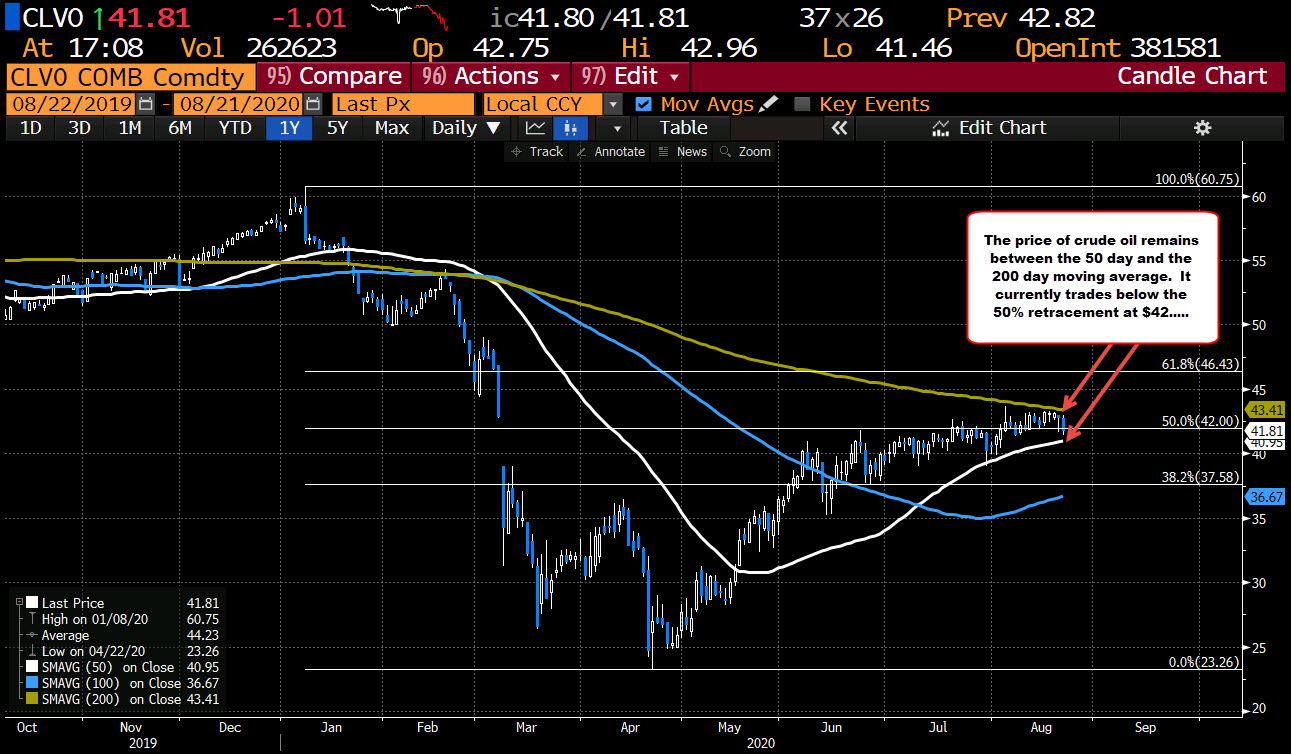Archives of “August 2020” month
rssCFTC commitment of traders: EUR longs remain near record levels
Weekly FX speculative positioning data from the CFTC
- EUR long 197K vs 200K long last week. Longs trimmed by 3K
- GBP long 7K vs 3k short last week. Positioned reversed to long.
- JPY long 21K vs 27K long last week. Longs trimmed by 6K
- CHF long 15K vs 17K long last week. Longs trimmed by 2K
- AUD short 3K vs 1K short last week. Shorts increased by 2K
- NZD 4K vs 0K short last week. Longs increased by 4K
- CAD short 34k vs 30K short last week. Shorts increased by 4K
Highlights:
- EUR longs where trimmed modestly from record levels last week
- GBP position turned long after being short by 36K at the beginning of June 2020
- AUD and NZD speculative positions remain near square
- CAD shorts remain the largest short position and increased by 4K this week
S&P and NASDAQ index close at record highs
Dow industrial average leads the way
the S&P and NASDAQ index both closed at record levels, but for the day the Dow industrial average was the biggest percentage gainer.
The final numbers are showing:
- S&P index up 11.73 points or 0.35% at 3397.24.
- The NASDAQ index rose 46.848 points or 0.42% at 11311.80
- Dow industrial average rose 190.84 points or 0.69% at 27930.53
For the week, the NASDAQ led the way. The Dow industrial average ended the week unchanged.
- S&P index rose 0.72%
- NASDAQ index rose 2.65%
- Dow industrial average was unchanged
For the year to date, the Dow industrial average still remains down. The NASDAQ index continues its stellar performance.
- S&P index +5.15%
- NASDAQ index +26.07%
- Dow industrial average -2.13%
Some of the big gainers today included:
- Apple, +5.14%
- dear and Company, +4.39%
- Nvidia, +4.43%
- Tesla, +2.39%
- Qualcomm, +2.15%
- Corning, +1.88%
- Nike, +1.63%
- Marriott, +1.35%
- AMD, +1.27%
- Chipotle, +1.13%
- Costco, +1.12%
- J&J, +0.9%
- Home Depot, +0.9%
Big losers today included:
- Slack, -2.97%
- United Airlines, -2.97%
- Papa John’s, -2.16%
- Uber, -1.85%
- Box, -1.83%
- Deutsche Bank, -1.71%
- Beyond Meat, -1.5%
- Delta, -1.27%
- Boeing -1.25%
- Raytheon technologies, -1.21%
- Whirlpool, -1.17%
- Netflix, -1.1%
Thought For A Day

Vantage Point teaches trading

I saw this poster for Vantage Point and immediately thought of trading the markets, of how there are so many traders with so many points of view. There is also the question of the the truth: is it the price, or is it where the price ‘should’ be? Does the truth even exist? One thing is for sure and that is, like the characters in this film, no individual has the complete picture.
A million traders, a million points of view, no truth.
Risk & Chance
Here are some interesting quotes from ‘Risk & Chance’ (Dowie and Lefrere) that have a relevance to trading and speculation more generally:
Henslin (1967) notes …dice players behave as if they are controlling the outcome of the toss. One of the ways they exert this is to toss the dice softly if they want a low number, or hard for a high number. Another is to concentrate and exert effort when tossing. These behaviours are quite rational if one believes that the game is a game of skill.
As a trader I wish I could figure out what portion of my trading results can be attributed to luck, and what portion to skill. The problem is that trading seems to be a game of both skill and luck, so we spend half our time figuring out just how hard we should be throwing the dice. Splitting skill from luck is a problem for all speculators, but high frequency traders can find out much sooner than low frequency macro traders, who only take a few positions each year. In the latter case, it may be close to impossible to look back to a macro trader’s career and make this determination with any reasonable level of certainty.
De Charms(1968) stated that “Man’s primary propensity is to be effective in producing changes in his environment. Man strives to be a causal agent, to be the primary locus of causation for, or the origin of, his behaviour; he strives for personal causation.
The polar opposite of mastery is helplessness. (more…)
Baker Hughes oil rigs 183 vs. 172 last week
Total rig counts up to 254 from 244 last week
In a surprise, the Baker Hughes rig counts moved higher this week.
- Total rigs moved to 254 from 244 last week. This is the 1st increase in 24 weeks.
- Oil rigs rose by 11 to 183 from 172 last week. This is the largest weekly gain since January
- Gas rigs fell by 1 on the week to 69 from 70 last week
The oil rigs reached the lowest level since 2005 last week. The move up to 183 is the highest since July 3 when rigs came in at 185.

Crude oil is trading at $41.65 for the October contract. That is little changed to the pre-release level.
Looking at the daily chart below, the contract remains above its 50 day average at $40.95 (white moving average line in the chart below) and below its 200 day moving average of $43.41. The range since August 6 as a low $41.33 and a high of $43.29. The low today reached $41.46 just above the low of that range.
In between the moving averages sits the 50% retracement of the 2020 trading range which comes in at even $42. As I type, the price has moved higher and currently trades at $42 – right at that 50% level. Get above and we could see further upside momentum.
At some point, the ups and downs will cease and we will get a break. The moving averages will represent key breakpoints. Focus on those levels.

Cutting Winners Short
- Reasons
- Pre-occupied by losses, especially losses accumulated in the day.
- Want to turn the running losses to break-even or positive first, before doing trades to make money, which is illogical.
- Afraid that whatever small profits will go away.
- Solutions
- Don’t look at the running P&L during the day.
- Exit only when stopped out.
- When you feel like getting out, ask yourself, if your original reason for taking the trade still valid? is the trend still valid? If yes, stay in the trade.
Selling Out at a Good Price and Re-Entering at a Worse Price
- Reasons
- You think that the price is going down, so you sell at $X. Price drops below $X, you feel good that you sold out earlier, then you shift your attention to other things. Now and then you check the price again, and saw that it kept going lower, so you still feel good. Then after a while you start to notice that the price is inching back to $X, so you start to think ‘hmm.. look’s like it’s going back up, maybe I shouldn’t have sold. Let’s monitor this for a while, see what happens’. Your ‘Fear of Missing Out’ and your ‘Fear of Future Regret’ is starting to grow.
- All the while, you had no concrete action plan on how you would handle this, you have not decided at what price or point you would go back in, or would you cut this position out entirely. Without a trading plan decided beforehand, you are bound to react to your emotions.
- Soon, the price moves above $X, and keeps moving up. Finally, you can’t take it anymore, you re-enter your position at a price higher than $X. That helped to ‘quieten’ your ‘Fear of Missing Out’.
- Then as it usually happens, price goes back down again, drops below $X and goes down further. Either your fear of taking a loss kicks in and you stick with a losing position, or you sell out at a loss.
- Solutions
- You have to decide beforehand, even before you exit the position, how you would handle the position. To do that, you need to be clear on the reason why you are selling in the first place.
- If you are selling because you think that the uptrend has changed to a downtrend, or the uptrend is broken, you would need to have specific criteria that you look for to know whether the uptrend has resumed. If the criteria has not been met, even if the price goes above $X, you will not re-enter your position.
- If you are selling because you think the uptrend is still intact but there will be a short momentum reversal, you need to get out and get back in very quickly, usually just catching 1-2 ticks more. This type of play where you react to momentum is highly discouraged. The risk-reward is bad, the skill level, reaction speed, concentration required are extremely high, and it makes you susceptible to falling into the trap of ignoring the bigger market structure.
- You have to realize that you are playing into the hands of the usual fighting that goes between bulls and bears when you keep reacting to the swings, which will naturally make you buy high and sell low.
- In conclusion, you need to be very clear of reason that you are selling. In that way, you would be clear of when, if ever, you would re-enter the position.
Hesitating on Entry and Ending Up Chasing the Market
- Reasons
- You just had a string of losses and you don’t dare to enter the next trade.
- You are not sure whether to take the entry signal, you do not trust your system completely.
- You were not paying full attention to the market, so your mind was not prepared to play, so you got stuck in indecision.
- You take too long to weigh all the arguments for the bull and bear sides.
- Chased market for fear of missing out. End up entering trades with stops being too far away.
- Might be the case where you detected hesitation, and you know hesitation is bad, and you simply brush hesitation aside without thinking and just enter the position.
- Solutions
- If you hesitated and missed the proper entry, wait for a retracement.
- If no retracement occurs, no choice but to miss the trade.
- It is better to take trades with limited risk rather than trades with bad risk:reward ratios.
- If the bull / bear case is 50-50, stay out.

